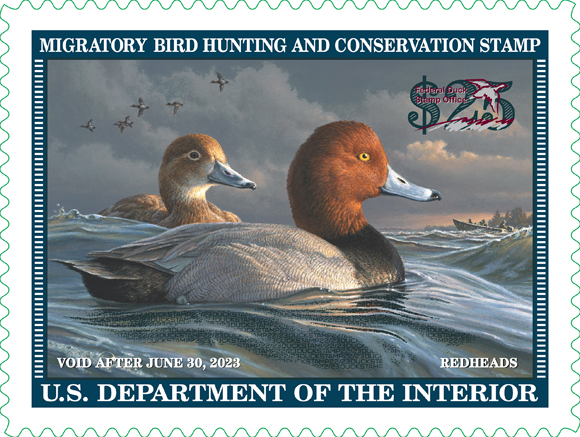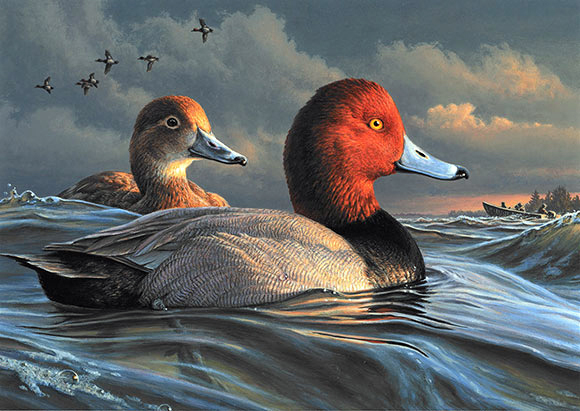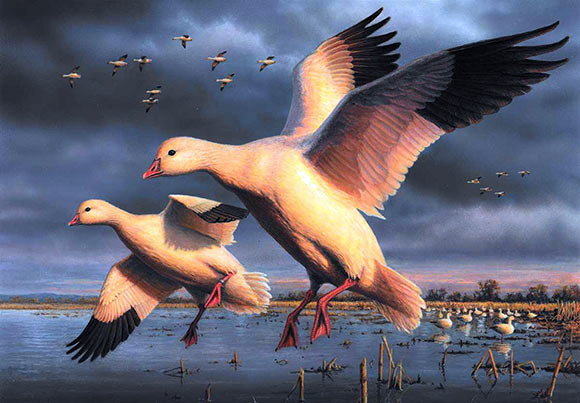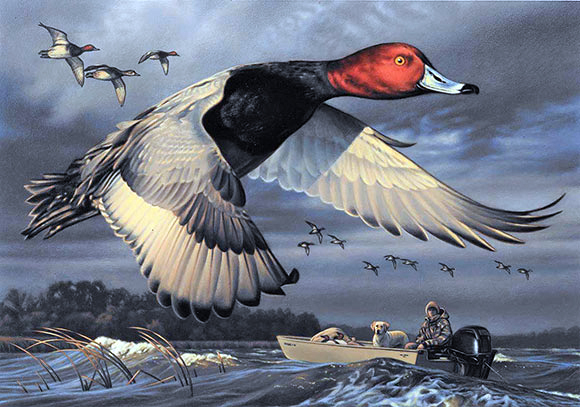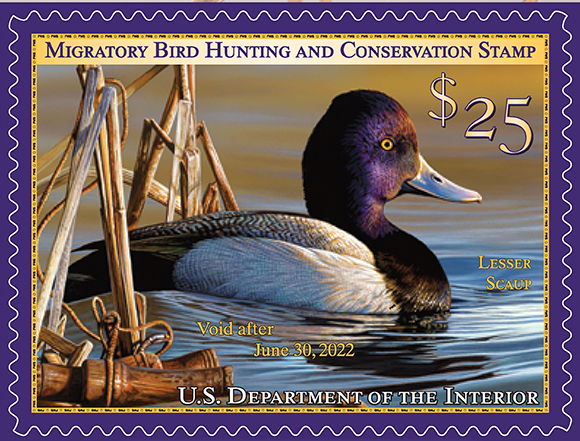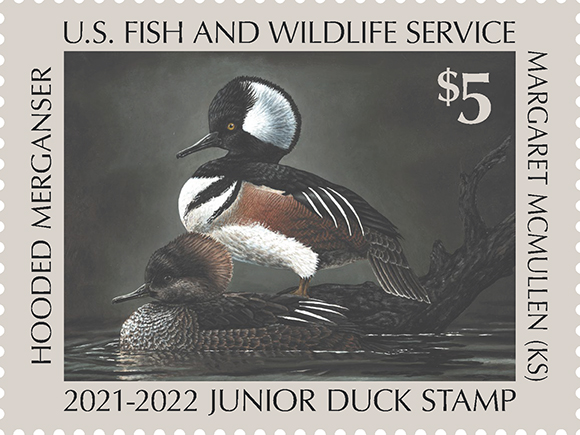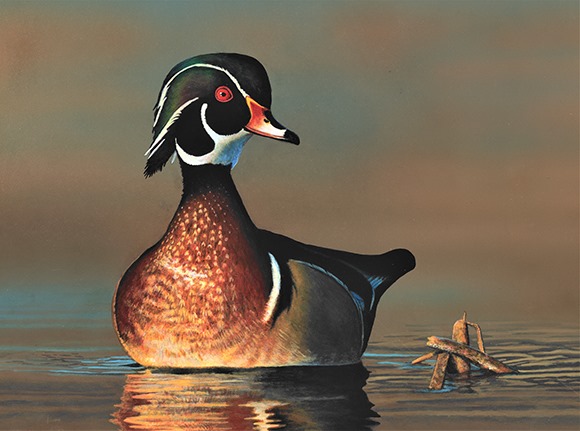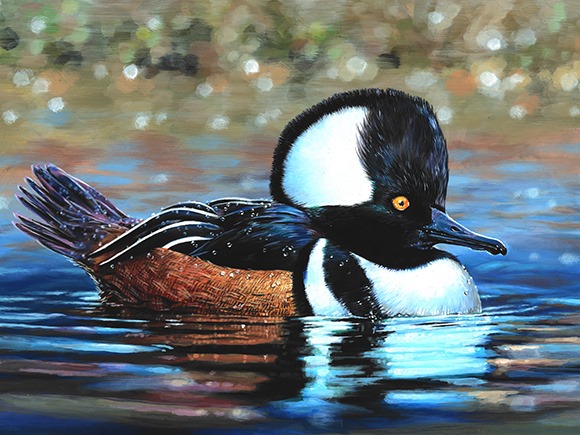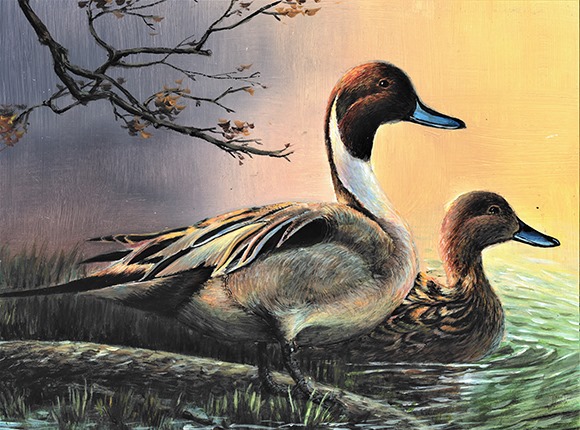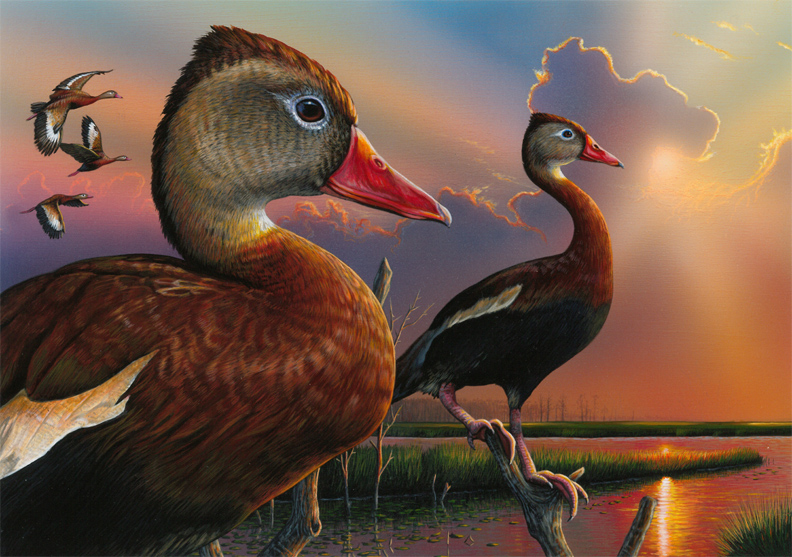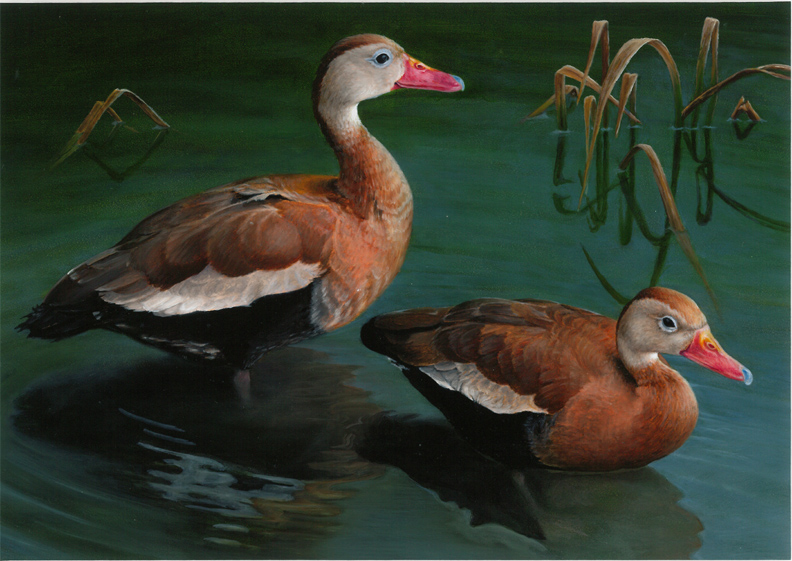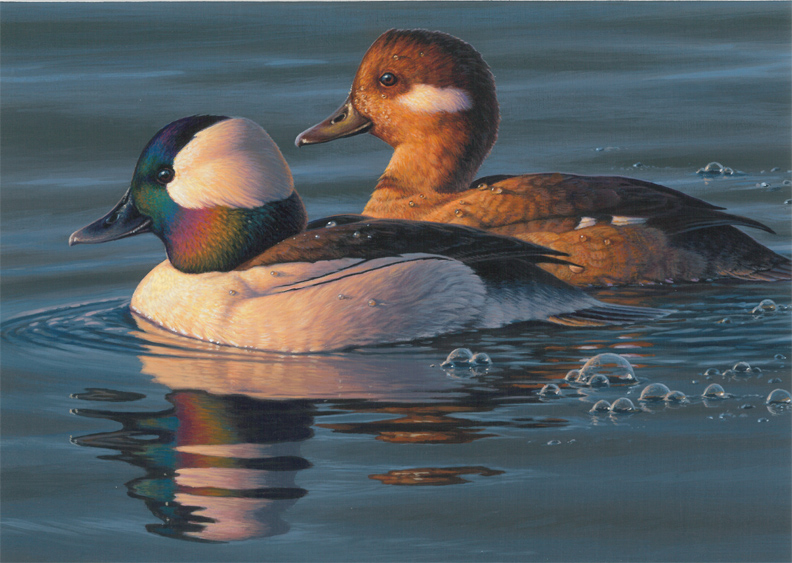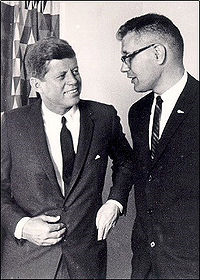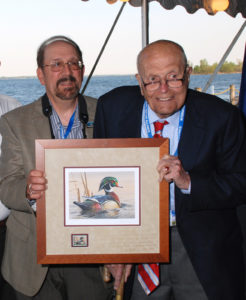30 June 2021
The Migratory Bird Hunting and Conservation Stamp plays a vital role in advancing wetland and grassland conservation, preserving valuable habitats for wetland birds and for future generations. The Friends of the Migratory Bird/Duck Stamp’s interest is to support the Federal Duck Stamp program, advocating and promoting the effort with its tremendous scope, reach, and value in celebrating our American culture and heritage since 1934.
In 2018, all entries to the Federal Duck Stamp art contest were required to include one or more waterfowl hunting-specific elements or a waterfowl hunting scene as part of the artwork.
In 2020, a rule made the theme “Celebrating Our Waterfowl Hunting Heritage” and the mandatory inclusion of an appropriate hunting element permanent, beginning with the 2020 Contest.
In June of 2021, the U.S. Fish and Wildlife Service is proposing to revise regulations governing the annual Migratory Bird Hunting and Conservation Stamp (Duck Stamp) Contest to remove the changes made in 2020.
The U.S. Fish and Wildlife Service indicates in their press release “This proposed rule would remove the permanent “celebrating our waterfowl hunting heritage” theme and the mandatory inclusion of an appropriate hunting element beginning with the 2022 contest; revise the judging requirements to consider that the entries reflect this theme; and revisit the qualifications for selection as a judge. Since the implementation of the 2020 final regulations, many stakeholders have continued to express their dissatisfaction with this element being a requirement for all entries.”
This proposed rule to revise the Contest Regulations was posted on the Federal Register on June 23. See the press release from the Department of the Interior.
Friends of the Migratory Bird/Duck Stamp recommend that this proposal be approved.
The proposed rule is open for public comments until July 23, 2021. All comments must be submitted through the process described in the proposed rule – if they are submitted any other way, they cannot be incorporated or considered. You can access the proposed rule and/or comment, via the Federal Register. Or you can use this link: https://tinyurl.com/duck-stamp-rules-rollback. Or you can search for the rule at www.regulations.gov using any of these search terms:
- FWS-HQ-MB-2021-0048
- Revision of Federal Migratory Bird Hunting and Conservation Stamp (Duck Stamp) Contest Regulations June 23, 2021
- 2021-13476
You can comment on the rule via the portal described above, or by postal mail. Ahead of entering your final comments, we recommend that you create your letter, ready to cut and paste to the portal.
We urge all of our readers to comment on this proposal. As a starting point for your customized response, the Friends have provided a sample letter and a list of talking points. Please share this information via your preferred social media.
Thank you for taking the time to comment and thanks for your support of the Migratory Bird Hunting and Conservation Stamp and the Duck Stamp Office!
Rationale for our position
We feel that this proposal will broaden the reach and appeal of the Stamp and the Stamp Art Contest.
This proposal removes limits placed on the creativity of artists. We hope this change will change reverse the steady decline in the number of contest entries.
The challenge now is to increase sales of the Stamp, which are down from a high of 2,412,651 in 1970-1971. Current sales numbers are similar to those in the 1960s and 1980s.
We greatly appreciate the hunting community. They have provided most of the dollars to support the purchase of wetlands in America. Even with their current unwavering support the number of stamps purchased continues to decline as the number of hunters decline.
The biggest opportunity for increased sales is with others that use and appreciate the National Wildlife Refuge System and our public lands and purchase the stamp as a way of supporting conservation. We need to broaden the base of support to include the growing number of non-consumptive citizens who value land protection.
Framing the Stamp as exclusively within the context of America’s hunting heritage does a disservice to the wide range of Stamp existing and potential purchasers. If more Stamps are not sold, not only will the Stamp and the Contest be negatively impacted, but waterfowl hunting and hunters who benefit most from this program, along with others who use our public lands, will see the impact of this program on preservation of waterfowl habitat shrink. The Stamp must be marketed to all audiences.
In summary, this proposal will position the Contest to engage new artists and more entries by allowing artists more freedom of expression when creating their entries, and to generate increased Stamp revenue through expanded sales to nonhunters. We feel the proposed rule change will positively impact the Stamp and the Stamp Art Contest.
In 1976, Congress changed the name of the Stamp from “The Migratory Bird Hunting Stamp” to “The Migratory Bird Hunting and Conservation Stamp” in order to acknowledge the rich tradition of the broad diversity of duck stamp supporters. The proposed rule will help to market the Stamp to all audiences, and should be implemented.
